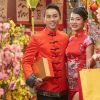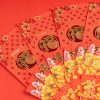
The Ching Ming Festival is considered one of the most important festivals in Chinese culture. Yes, it’s not as big as the Chinese New Year (Spring Festival) or the Lantern Festival, but the Ching Ming Festival is still considered a sacred tradition upheld by many Chinese people and those of Chinese descent.
Most festivals in China are celebrated to wish for good fortune in health and wealth, but the Ching Ming Festival is a bit different since the main focus of the festival is to commemorate the life of their ancestors. This is why the Ching Ming Festival is also often called the Tomb Sweeping Day or Pure Brightness Festival.
Just like any other Chinese festival, the Ching Ming Festival is celebrated based on the Chinese Lunar Calendar, and the festival is celebrated 104 days after the Winter Solstice.
Before we delve further into the activities and traditions performed when celebrating this festival, let us first discuss the history and myths behind the Ching Ming festival, that allowed this sacred festival to still be widely celebrated in this modern era.
History Behind Ching Ming Festival
The oldest record about the Ching Ming Festival can be traced back to the Zhou Dynasty period (1046-221 BC), but the term “Ching Ming” hadn’t been used back then.
Ancestor veneration during this period was mainly performed by the Emperor and rich nobles. They performed rituals to venerate their dead ancestors with the hope that their ancestors can provide blessings, prosperity, peace, and abundant harvest. Venerating ancestors and even taking care of tombs are very expensive in the ancient world, and that is why only the rich can celebrate this occasion back then.
However, things changed during the Tang Dynasty period (618-907 AD).
In this period, Emperor Xuanzong saw that the ancestor veneration rituals performed by the nobles were too lavish and wasteful. The Emperor then publishes a decree to instead reorganize these rituals into a single festival, giving birth to the Ching Ming festival tradition.
The Emperor also made this day a national holiday and mandated all classes of the society, including commoners and the poor, to also commemorate the tradition. They must visit, clean, and venerate the tombs of their ancestors. Another tradition that was performed back then is eating cold foods, which is related to the legend of Duke Wen (we’ll discuss this legend further below).
During the Qing Dynasty period (1644-1911 AD), the tradition evolved once again into the form we all recognized in this modern era. The tradition of eating cold foods was abandoned, and the festival was now thoroughly focused on the tomb-sweeping and ancestor veneration. This tradition stays until today.
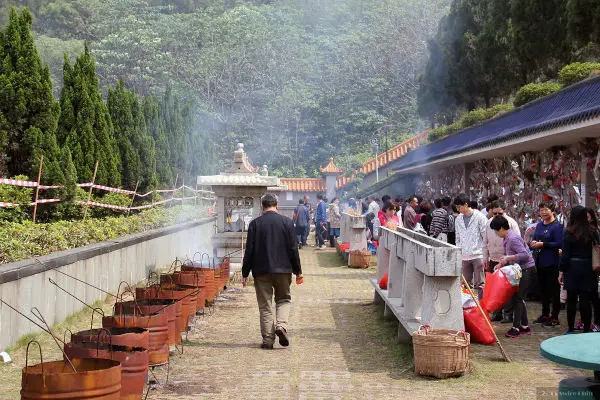
The Legend Behind The Ching Ming Festival
As with any other Chinese festival, there are various myths and folklore surrounding the Ching Ming Festival, but before we learn about these legends, we have to know that there used to be a festival named Hanshi.
The Hanshi Festival was also known as the Cold Food Festival, and as the name suggests, the main activity during this festival is to eat cold food together.
A Chinese legend told a story about a ruler named Duke Xiao, who is told to reign during the period of Spring and Autumn (770-476 BC). Xiao was a ruler in the state of Jin, and it was told that Duke Xiao wanted his throne to be succeeded by his son, Li Ji, which is not the first on the succession line but is a son of his favorite concubine.
To ensure this succession, Duke Xiao must kill two of his other sons, and in cold blood, he killed his eldest son, Shen Sheng.
However, once he tried to kill his second-oldest son, named Chong’er, he already disappeared. Apparently, Chong’er learned of what his father has done to Shen Sheng and hastily ran away to avoid his father’s sword.
Running from this blood feud, Chong’er lived in exile for 19 years, and during this exile, he successfully gained small but loyal followers.
The most loyal of these followers was named Jie Zitui. It was told that at one time, Chong’er was starving, almost to his death, and Jie Zitui willingly sliced his leg’s muscle and gave it to Chong’er to eat. This allowed Chong’er to live.
Long story short, in 636 BC, Chong’er performed a coup, and successfully usurp the throne of the Jin dynasty. He became a ruler and named himself Duke Wen, and gave presents and riches to those loyal to him during the exile.
However, Duke Wen forgot the sacrifices of Jie Zitui in the past, which really broke Jie Zitui’s heart, causing him to leave the Palace.
Duke Wen then remembered Jie Zitui’s sacrifices, albeit too late, and sent people to look for Jie Zitui’s whereabouts. They finally found Jie Zitui, and hurryingly Duke Wen went to meet Jie Zitui and asked for his forgiveness. Duke Wen asked Jie Zitui to go back to the Royal Palace and promised him a high position, riches, and glory.
Yet, Jie Zitui refused the offer and chose to remain in the depth of the mountain.
Duke Wen didn’t give up, and look for Jie Zitui’s whereabout once again, but failed to find Jie Zitui wherever he searchers.
A royal advisor then gave the advice to burn the forest leading to the mountain. The idea was, with the fire, Jie Zitui won’t have any other choice than to come out of his hiding. Duke Wen agreed to the idea, and the forest burned for three days and three nights.
Online Courses about Chinese Culture from Udemy (Aff.link)
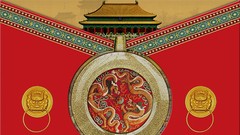
However, after three days, there were still no sighs of Jie Zitui, and Duke Wen ordered his men to perform another search. Finally, they found where Jie Zitui was, but he was already dead. Jie Zitui tried to escape the fire while carrying his mother on his back, and was his charred corpse was found behind a burnt tree.
Duke Wen was really broken because of this tragedy and decided to build a temple to honor Jie Zitui. Duke Wen also ordered everyone not to light any fire during this day, and so people can only eat cold food. This is the origin behind the Hanshi (cold food) day.
A year after Jie Zitui’s death, Duke Wen visited Jie Zitui’s tomb, but he was awed by an old willow tree that stayed intact without any burn at all. Duke Wen saw this as a sign from heaven, and so he decreed that a day after the Hanshi festival should be celebrated as Qingming Jie (pure and bright day).
Activities and Traditions on Ching Ming Festival
As mentioned, the Ching Ming Festival is mainly focused on venerating the ancestors and family reunion, and here are some of the core traditions and activities of the Ching Ming festival:
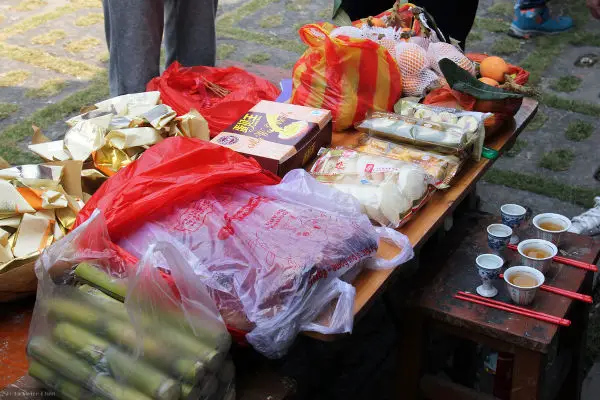
Tomb-sweeping
The most important activity of the whole festival, and as the name suggests, tomb-sweeping is the tradition in which the whole family visits the tomb of parents, grandparents, and even ancestors. They also clean the tombs and perform renovations when necessary.
The whole family must be involved in the activity. Children can pull out weeds surrounding the tomb, and they must also pour newer soil to ensure the tomb stays clean and fresh.
It’s quite common to also provide offerings for the ancestor: favorite foods during their lives, tea, wine, water, fruits, and other foods. Of course, they also pray while burning incense as a form of veneration for the ancestors. For those that are still strong in tradition, it’s also quite common to burn fake money, which is believed to give the deceased more money in the afterlife.
Kite flying
Another important tradition for the Ching Ming Festival is to fly kites.
Kites are believed to symbolize good fortune. So, many Chinese people don’t pull back their kites once they have flown high. Instead, they’ll cut the string and release the kite, which is believed to bring good fortune in their lives. The released kite symbolizes releasing bad luck, diseases, and warding off negative energy away from their lives.
Many people also design their own kites in preparation for the festival, and if you visit China during the Ching Ming festival, you’ll be able to find kites in various sizes, colors, and unique designs.
Click here to see some Chinese Kites designs – Opens in a new tab.
Eating traditional Ching Ming foods
There are several traditional foods and beverages that are unique for the Ching Ming Festival celebration, including:
- Qing Tuan
Qing Tuan is considered the most important food within the Ching ming Tradition. It is a type of dessert made of glutinous rice flour mixed with barley grass or Chinese mugwort, creating a unique taste that is difficult to describe. Round in shape and filled with various sweet-flavored toppings.
- Sanzi
Another must-have food during the Ching Ming festival, made of flour that is shaped like noodles, then deep-fried to make it a crispy, savory snack.
- Ching Ming snails
Snails can be deep-fried or braised with soy sauce and are one of the favorite dishes of many people since, during the Ching Ming Festival’s season, snails are fat and juicy. So, when cooked well, snails can offer a unique and savory taste, although obviously, they aren’t for everyone.
Check out our “Free Culture Library“. We have compiled some great free resources, about Chinese culture, for your research.
Stay in Touch
 Join our newsletter by using the forms on this website or click here!
Join our newsletter by using the forms on this website or click here! Follow us on Google News
Follow us on Google News Follow us on Facebook
Follow us on Facebook
Featured image: “Time of the year to tend to the graves” by Can Pac Swire is licensed under CC BY-NC 2.0


